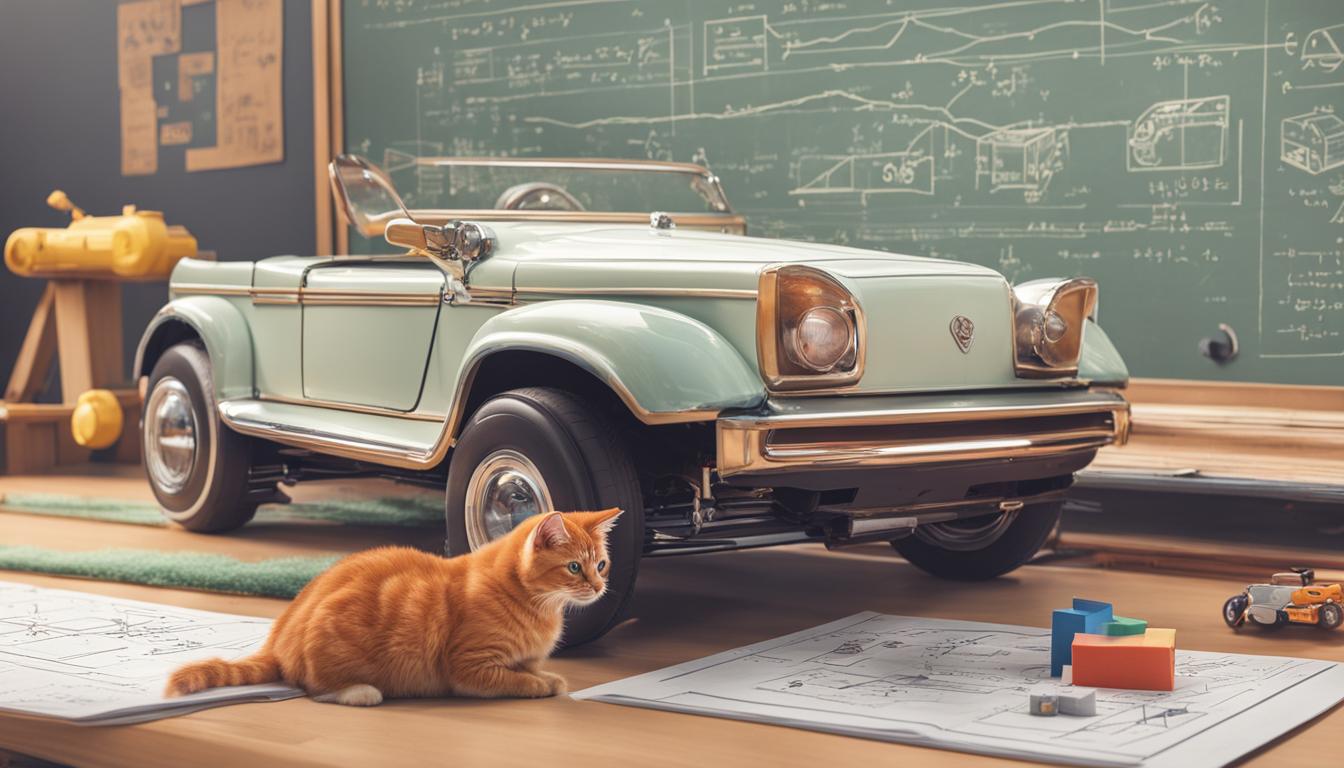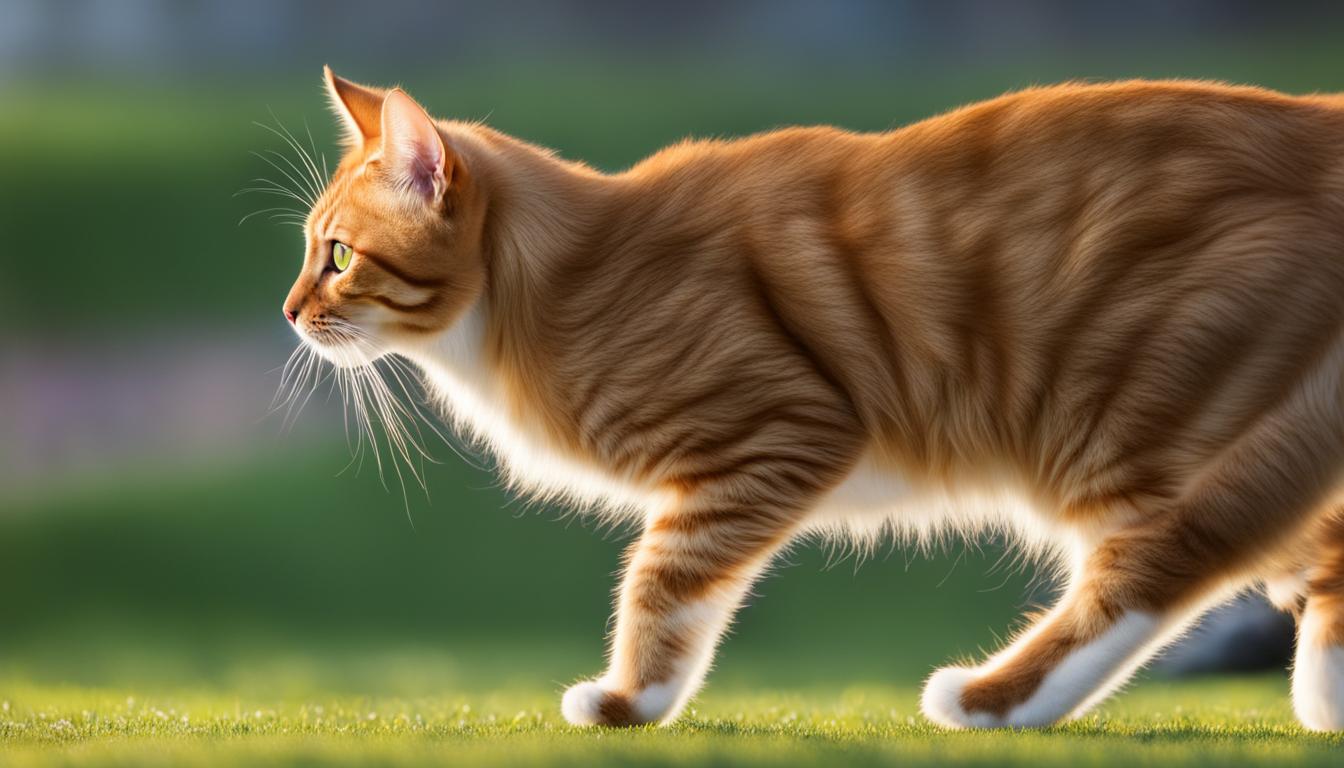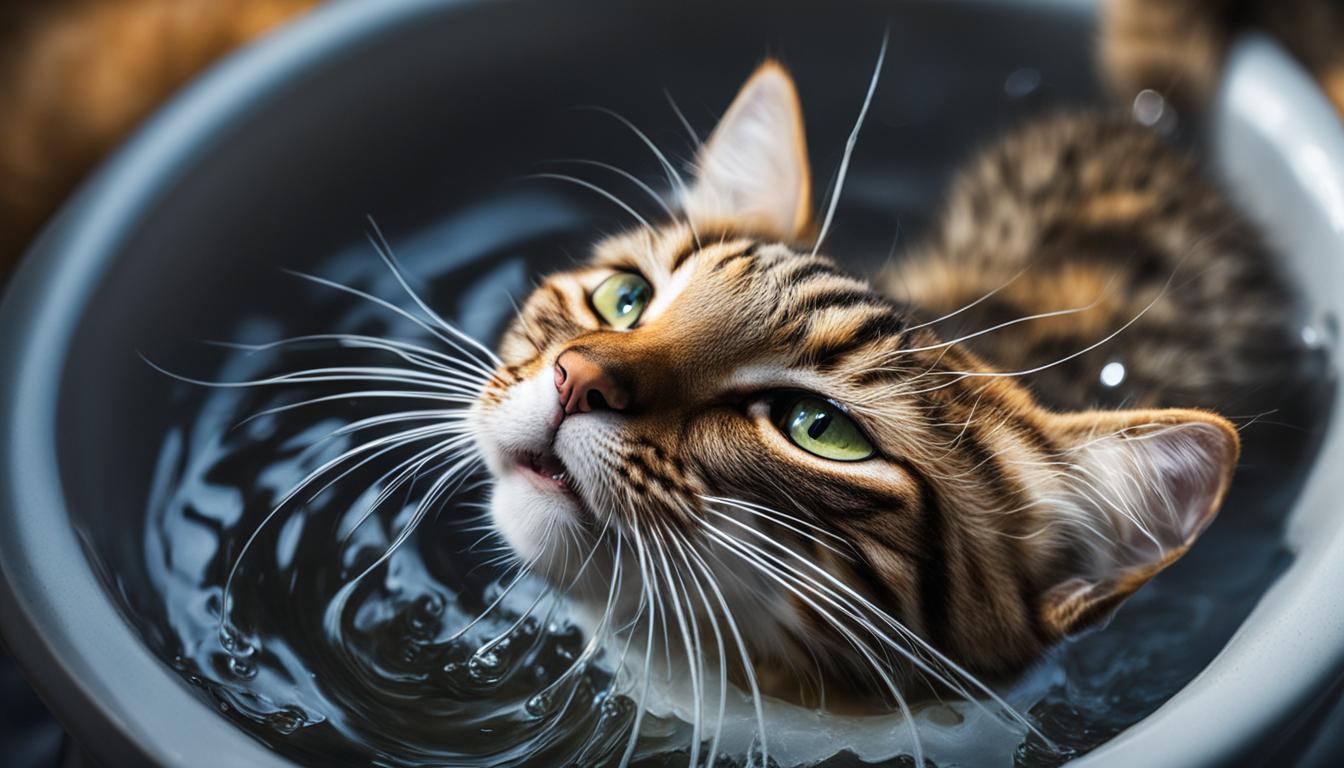Curiosity has led me down a rabbit hole of research, uncovering the fascinating world of cat tail physics. Yes, you read that right – cat tail physics! These enigmatic creatures possess a hidden complexity that goes beyond their adorable fluffiness. Join me as we delve into the secrets of cat tail balance and communication.
It all starts with the humble cat tail, a marvel of evolution that serves multiple purposes. Not only does it aid in a cat’s remarkable agility and balance, but it also acts as a silent communicator, conveying an array of emotions and intentions.
But how do these majestic tails achieve such incredible feats? Let’s explore the intricate world of cat tail physics together, uncovering the secrets that make our feline friends truly one-of-a-kind.
Key Takeaways:
- 1. Cat tails play a crucial role in maintaining balance and agility.
- 2. Tail movements can convey a cat’s emotions and intentions.
- 3. Understanding cat tail physics can provide valuable insights into feline behavior.
- 4. Cats have evolved their tails to adapt to various environments and hunting techniques.
- 5. Cat tail injuries can be overcome, and cats can still lead fulfilling lives even without a tail.
Evolution of the Cat Tail
Cats have been fascinating creatures throughout history, and their peculiarities extend to their unique tails. The evolution of the cat tail is a testament to their remarkable adaptability and survival instincts. Over thousands of years, domestication and environmental factors have shaped the anatomy and function of the cat’s tail, allowing them to thrive in various environments.
The cat’s tail serves multiple purposes, including balance, communication, and agility. In terms of evolution, the cat tail has undergone subtle changes since the domestication process began around 7500 BC. Initially attracted to human settlements due to the presence of rodents, cats gradually developed slight modifications in their anatomy to navigate their new habitats.
One of the key features of a cat’s tail is its flexibility, which enables them to maintain balance even in precarious situations. Whether leaping from great heights or walking across narrow surfaces, the cat’s tail acts as a counterbalance, allowing them to make precise and agile movements. This unique adaptation has contributed to their survival and hunting prowess over the years.
The cat’s tail also plays a crucial role in communication. Through various tail movements, cats convey their emotions, intentions, and even warnings to other cats and humans. A straight, upright tail often suggests a confident and friendly demeanor, while a swishing or puffed-up tail may indicate agitation or aggression. Understanding these tail movements can provide valuable insights into the cat’s state of mind and enhance our interactions with them.
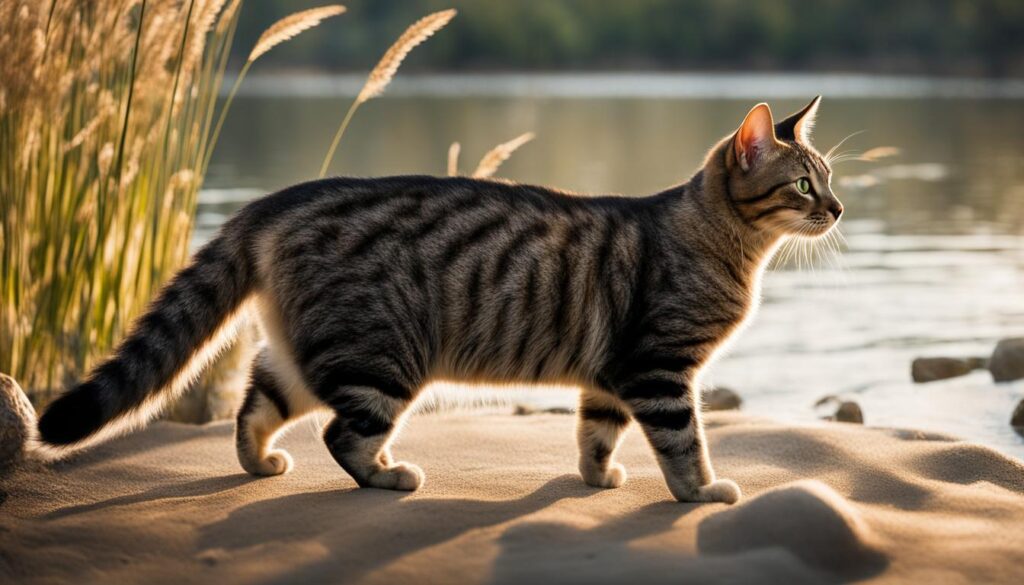
Cat Tail Evolution Highlights
| Evolutionary Milestone | Description |
|---|---|
| Tail as a Balance Aid | The cat’s tail evolved to serve as a counterbalance, allowing for precise and agile movements. |
| Communication Tool | Cats utilize tail movements to express their emotions, intentions, and potential threats to others. |
| Survival Advantage | Through subtle anatomical changes, cats adapted their tails to navigate different environments, aiding in their survival. |
As we continue to unravel the mysteries behind the cat’s tail, it becomes evident that this appendage is so much more than just a physical extension. Its evolutionary journey highlights the remarkable adaptations that cats have undergone to thrive alongside humans. By understanding and appreciating the intricacies of the cat tail, we can deepen our connection with these enigmatic creatures.
Cat Tail Movements and Their Meanings
When it comes to understanding our feline friends, it’s important to pay attention to the subtle language they use to communicate. One of the most telling aspects of a cat’s communication is through their tail movements. Cats use their tails like a secret code, expressing a range of emotions and intentions. Let’s dive into the fascinating world of cat tail movements and decipher their hidden meanings.
The Straight and Upright Tail: When a cat holds its tail straight up in the air, it signals confidence and friendliness. It’s a positive sign that indicates your cat is content and open to interaction. This upright tail is often accompanied by a gentle curve at the end, resembling a question mark, as if inviting you to engage in play.
The Swishing Tail: On the other end of the spectrum, a vigorously swishing tail indicates agitation or aggression. When a cat’s tail is lashing back and forth, it’s a clear warning sign to back off. It’s best to give the cat some space and avoid any sudden movements that might escalate their agitation.
The Puffed-Up Tail: When a cat’s tail fluffs up like a bottlebrush, it’s a defensive posture often seen when the cat feels threatened or frightened. This puffy tail serves as a visual signal to potential threats, making the cat appear larger and more intimidating. It’s their way of saying, “I’m ready to defend myself if necessary.”
“Cats use their tails as a form of communication. Different tail movements can convey various meanings.”
The Tucked-In Tail: A tucked-in tail is a clear indication of fear or submission. When a cat tucks its tail tightly against its body, it’s a sign that they’re feeling anxious or intimidated. This posture is often observed in a cat who is unsure or uncomfortable in a new environment or when encountering unfamiliar people or animals.
The Slowly Wagging Tail: Unlike the fast swishing tail, a slow wagging motion usually indicates a cat’s curiosity or intrigue. When a cat is gently wagging its tail from side to side, it’s a sign that they’re focused on something, trying to gather information, or preparing to pounce on their prey. It’s a moment of intense concentration and anticipation.
Understanding cat tail movements can provide valuable insights into your feline companion’s emotions and intentions. By paying attention to these subtle cues, you can strengthen the bond with your cat and ensure better communication. So the next time you see your cat’s tail in action, take a moment to decode the secret language they’re sharing with you.
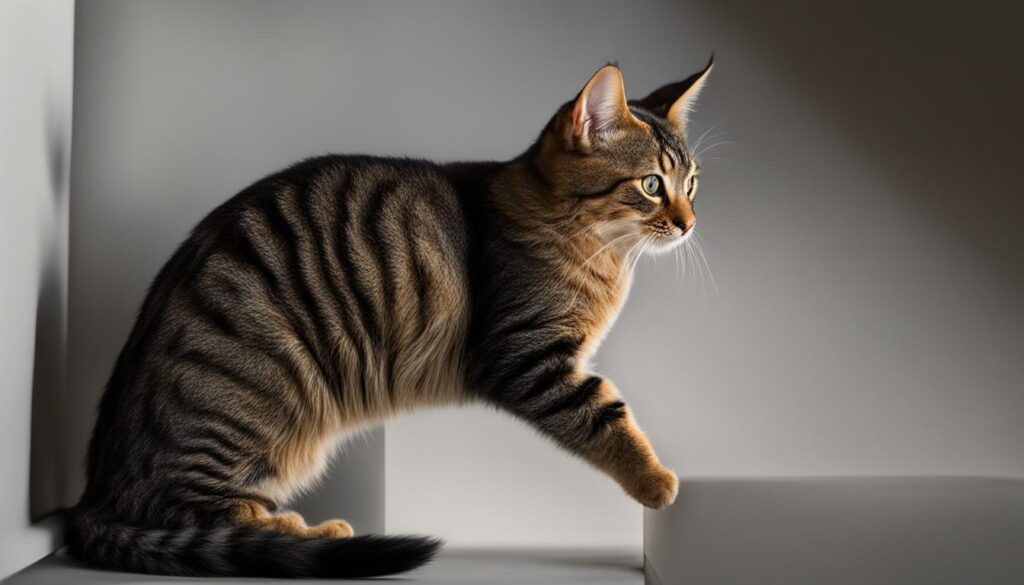
The Role of the Cat Tail in Hunting
When it comes to hunting, a cat’s tail is not just a mere appendage—it serves as a vital tool for success. The tail plays a crucial role in providing balance and stability as cats stealthily stalk their prey. Just like a tightrope walker uses a balancing pole, a cat’s tail acts as a counterbalance, enabling it to make precise and agile movements. This helps the cat stay nimble and maintain control during the intense moments leading up to the pounce.
But the cat’s tail is not only a physical aid for hunting; it also serves as a form of communication during the entire process. Through subtle movements, the cat can guide its fellow hunters or signal a coordinated attack. It’s a silent language that allows the feline predators to work together seamlessly. By observing the tail movements of a hunting cat, it’s possible to gain insights into their strategies and intentions.
“The cat’s tail is a remarkable adaptation that enhances its hunting prowess. Its ability to maintain balance and communicate while on the prowl is truly fascinating.”
Moreover, the cat’s tail serves as an indicator of focus and determination. A twitching tail, for instance, can indicate intense concentration as the cat zeroes in on its prey. On the other hand, a still and relaxed tail might suggest that the cat is patiently observing or waiting for the opportune moment to strike. By understanding these subtle tail movements, we can gain a glimpse into the cunning and calculated nature of our feline hunters.
| Hunting Techniques | Description |
|---|---|
| Stalking | The cat uses its tail for balance and to maintain a low profile while silently following its prey. |
| Pounce | The cat tucks its tail close to its body, allowing for maximum power and agility during the leap. |
| Amush | With a flick of its tail, the cat communicates with its fellow hunters to coordinate a surprise attack. |
| Final Strike | As the cat lunges forward, its tail helps maintain balance and provides additional momentum for the successful capture of its prey. |
The Cat Tail in Climbing
When it comes to cat agility, the tail plays a crucial role in helping these furry felines conquer the heights. With their innate arboreal agility, cats are known for their ability to scale trees and other vertical surfaces effortlessly. The secret behind their climbing prowess lies in the remarkable capabilities of their tails.
Unlike humans, who rely primarily on their limbs for balance and stability, cats utilize their tails as an additional appendage to maintain equilibrium while navigating tricky terrain. The tail acts as a counterweight, serving as a vital tool for weight distribution and grip during the climbing process.
With its flexible and graceful movements, the cat’s tail acts as a natural extension of its body, providing precision and control as it methodically ascends or descends. The tail acts as a rudder, allowing cats to make subtle adjustments to their body position, ensuring a secure foothold. This remarkable tail grip gives them the confidence to explore treacherous heights without fear of losing their balance.
While other animals may struggle to maintain their footing on vertical surfaces, cats evoke a sense of awe and envy with their innate climbing abilities. Their tails enable them to maneuver confidently through their arboreal habitats, showcasing their supreme agility and adaptability in the face of challenging environments.

Table: Comparing Cat Tail Lengths and Climbing Agility
| Cat Breed | Tail Length (inches) | Arboreal Agility (on a scale of 1-5) |
|---|---|---|
| Maine Coon | 11-16 | 5 |
| Bengal | 7-10 | 4 |
| Abyssinian | 6-7 | 3 |
| Persian | 3-4 | 2 |
As shown in the table above, cats with longer tails, such as the Maine Coon, typically exhibit a higher level of arboreal agility compared to breeds with shorter tails. However, it’s important to note that tail length is just one factor contributing to a cat’s climbing abilities. Other factors like muscle strength, coordination, and experience also play significant roles in determining their prowess in vertical endeavors.
Cat Tail Injuries and Recovery
When it comes to our feline friends, their tails are not only a source of balance and communication but also vulnerable to injuries. Cat tail injuries can occur due to accidents or fights, and the severity of the damage may vary. In some cases, tail amputation may be necessary to ensure the cat’s well-being and quality of life.
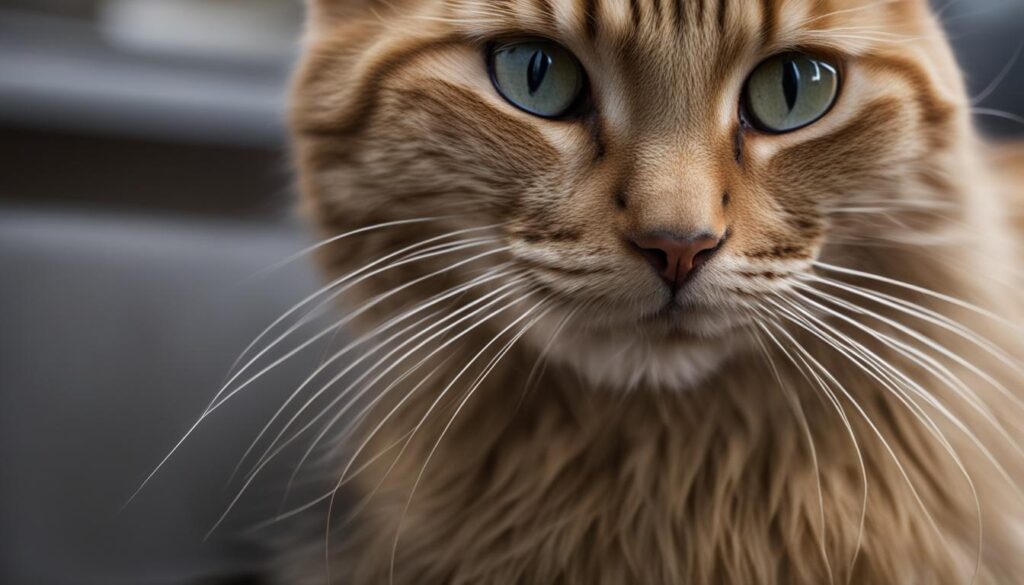
After tail amputation, cats can adapt remarkably well. Despite the loss, they are still capable of maintaining their balance and engaging in effective communication using other body language cues. It’s essential for cat owners to provide a safe and supportive environment during the recovery process.
Common Types of Cat Tail Injuries
There are several types of cat tail injuries that can occur. These include:
- Fractures: A cat’s tail can easily be fractured or broken, especially if it is caught in a closing door or accidentally stepped on.
- Dislocations: Tail dislocations can happen when a cat falls from a great height or experiences trauma to the base of the tail.
- Nerve damage: In some cases, tail injuries can lead to nerve damage, causing loss of control or sensation in the tail.
It’s important to seek immediate veterinary care if a cat experiences any tail injury. Early diagnosis and treatment can help prevent further complications and promote a smoother recovery.
Recovery and Adaptation
After tail amputation, cats may experience some discomfort and require pain medication during the initial stages of recovery. The wound should be kept clean and monitored for any signs of infection. Gradually, the cat will adjust to life without a tail and relearn how to balance and communicate using other means.
During the recovery period, it’s crucial to provide the cat with a calm and stress-free environment. Engaging in gentle play and providing opportunities for mental stimulation can help keep their spirits high. It’s also important to monitor the cat’s overall well-being, including their mobility and ability to urinate or defecate without any issues.
| Type of Injury | Treatment | Recovery Time |
|---|---|---|
| Fractures | Immobilization, pain management, possible surgical intervention | Several weeks to a few months |
| Dislocations | Reduction of the dislocation, pain management, possible surgical intervention | Varies depending on the severity |
| Nerve damage | Supportive care, pain management, physical therapy | Varies depending on the extent of the damage |
| Tail amputation | Surgical removal of the tail, pain management, wound care | A few weeks to a few months |
Each cat’s recovery process may vary based on the type and extent of the injury. It’s important to follow the veterinarian’s instructions and schedule regular check-ups to ensure the cat’s progress and well-being.
Conclusion
So, there you have it—cat tails are not just fluffy accessories or mere appendages; they are a cat’s secret weapon. From maintaining their balance to communicating their intentions, the cat’s tail is a multifunctional marvel.
Throughout history, cats have evolved alongside humans, adapting their tails to suit their new domestic lifestyle. These agile appendages have become essential tools in hunting, climbing, and communication.
When you observe a cat’s tail movements, you can decipher their mood, whether they’re feeling confident, agitated, or ready for a coordinated attack. It’s like unlocking their secret code and gaining insight into their feline psyche.
So, next time you encounter a cat, take a moment to appreciate their magnificent tail. Marvel at the way it swishes, twitches, and curls, revealing their unspoken messages. Cats may seem mysterious, but their tails hold the key to understanding their hidden world.
FAQ
What is the significance of a cat’s tail in their balance and communication?
A cat’s tail plays a crucial role in maintaining balance and agility. It acts as a counterbalance while climbing or making precise movements during hunting. Additionally, a cat’s tail is used as a form of communication, with different movements conveying various meanings.
How did the domestication of cats affect their anatomy and behavior?
The domestication process led to minor changes in cat anatomy and behavior. One significant adaptation is the cat’s tail, which aids in balance and communication. Cats use their tails to convey emotions, intentions, and coordinate actions with other cats.
What do different tail movements in cats mean?
Cat tail movements can convey various meanings. A straight tail held upright typically indicates a confident and friendly cat, while a vigorously swishing tail may signal agitation or aggression. Understanding these tail movements can help interpret a cat’s mood and intentions.
How does a cat use its tail during hunting?
A cat’s tail is instrumental in hunting. It acts as a counterbalance, allowing the cat to make precise and agile movements while stalking prey. During the hunting process, subtle tail movements guide other cats or signal a coordinated attack.
What role does a cat’s tail play in climbing?
A cat’s tail helps maintain balance and grip while navigating trees and other vertical surfaces. It acts as a counterweight, enabling cats to make intricate and nimble movements while ascending or descending.
What happens if a cat experiences a tail injury?
Tail injuries can occur due to accidents or fights, and severe damage may require tail amputation. However, cats are resilient and can adapt to life without a tail. After amputation, cats can still maintain their balance and effectively communicate using other body language cues.



